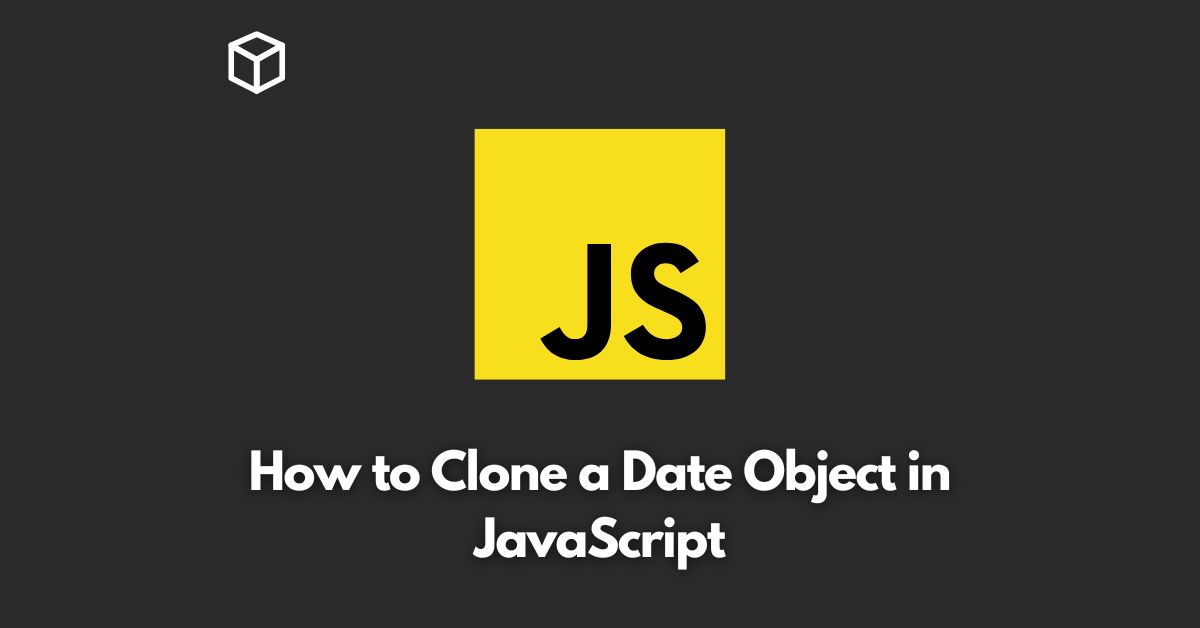JavaScript is a popular and widely used programming language for web development.
One of the core data types in JavaScript is the Date object, which represents a specific point in time.
In some cases, you may want to clone a Date object, which means creating a new object with the same value as the original Date object.
This Javascript tutorial will provide you with an in-depth understanding of how to clone a Date object in JavaScript.
You will learn about the different methods you can use to clone a Date object and when to use each method.
Using the Date Constructor
The simplest way to clone a Date object is to use the Date constructor.
The Date constructor takes a string representation of a date and time and returns a new Date object with that value.
To clone a Date object, you can pass the value of the original Date object to the Date constructor.
Here’s an example:
let originalDate = new Date('2023-01-29');
let clonedDate = new Date(originalDate);
console.log(clonedDate);In this example, the originalDate object is created using the Date constructor and initialized with the value ‘2023-01-29’.
The clonedDate object is then created using the Date constructor and passing in the originalDate object.
The console.log statement will print the clonedDate object, which will have the same value as the originalDate object.
Using the .getTime() Method
Another way to clone a Date object is to use the .getTime() method.
The .getTime() method returns the number of milliseconds since January 1, 1970, for a given Date object.
To clone a Date object, you can use the .getTime() method to get the value of the original Date object, and then pass that value to the Date constructor.
Here’s an example:
let originalDate = new Date('2023-01-29');
let clonedDate = new Date(originalDate.getTime());
console.log(clonedDate);In this example, the originalDate object is created using the Date constructor and initialized with the value ‘2023-01-29’.
The clonedDate object is then created using the Date constructor and passing in the value returned by the .getTime() method of the originalDate object.
The console.log statement will print the clonedDate object, which will have the same value as the originalDate object.
Using the JSON.parse() and JSON.stringify() Methods
Another way to clone a Date object is to use the JSON.parse() and JSON.stringify() methods.
The JSON.stringify() method converts a JavaScript value to a JSON string, and the JSON.parse() method parses a JSON string and returns a JavaScript value.
To clone a Date object, you can use the JSON.stringify() method to convert the original Date object to a JSON string, and then use the JSON.parse() method to convert the JSON string back to a JavaScript value.
Here’s an example:
let originalDate = new Date('2023-01-29');
let clonedDate = JSON.parse(JSON.stringify(originalDate));
console.log(clonedDate);In this example, the originalDate object is created using the Date constructor and initialized with the value ‘2023-01-29’.
The clonedDate object is then created by converting the originalDate object to a JSON string using the JSON.stringify() method and then parsing the JSON string back to a JavaScript value using the JSON.parse() method.
The console.log statement will print the clonedDate object, which will have the same value as the originalDate object.
Conclusion
Cloning a Date object in JavaScript can be done using several methods, each with its own benefits and drawbacks.
The most straightforward method is to use the Date constructor, but this method may not work if you need to clone a Date object with a non-standard time value.
The .getTime() method is a reliable way to clone a Date object, but it may not be the most intuitive for some developers.
Finally, the JSON.parse() and JSON.stringify() methods provide a flexible and versatile way to clone a Date object, but they may not be the most efficient in terms of performance.
In conclusion, when you want to clone a Date object in JavaScript, you should choose the method that best fits your specific use case, taking into consideration the requirements of your project and the needs of your users.
With the methods and examples outlined in this post, you now have the knowledge and tools to clone Date objects in JavaScript with confidence.




